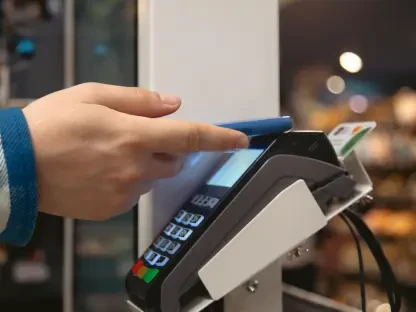I’m thrilled to sit down with Zainab Hussain, an e-commerce strategist with a deep background in customer engagement and operations management. With years of experience helping businesses navigate the digital landscape, Zainab has been instrumental in shaping solutions for small merchants in emerging markets. Today, we’re diving into her insights on how platforms like Zatiq are transforming the e-commerce space for small businesses in regions like South Asia and the Middle East. Our conversation explores the unique challenges these merchants face, the innovative tools designed to empower them, and the broader economic impact of bridging the digital gap.
What inspired the creation of platforms like Zatiq, and how did you identify the specific challenges small businesses face in emerging markets like Bangladesh?
The inspiration behind platforms like Zatiq comes from a stark reality: millions of small businesses in emerging markets are eager to join the digital economy but lack the right tools. In Bangladesh, for instance, I saw firsthand how small merchants struggled with complex global platforms that required technical know-how and upfront costs they simply couldn’t afford. Many were using makeshift solutions like selling on Facebook with manual tracking, which limited their growth. My background in operations showed me that the real issue wasn’t just access to technology—it was about creating something intuitive, affordable, and tailored to local needs like fragmented payment systems and logistics challenges.
How do you define the ‘untapped sellers’ that Zatiq aims to empower, and what keeps them from fully participating in the digital economy?
Untapped sellers are the millions of micro-merchants and small business owners who have the drive to sell online but haven’t been able to because of structural barriers. These are often shop owners or entrepreneurs in rural or urban areas of South Asia and the Middle East who rely on cash transactions and informal setups. The biggest hurdles include a lack of technical skills, high costs of existing e-commerce platforms, and the absence of local integrations for payments or delivery. They’re essentially locked out of scaling because the systems weren’t built for their reality.
Can you walk us through how a tool like Zatiq Easy, which promises an online store setup in just 10 seconds, actually works for someone with no tech background?
Absolutely. Zatiq Easy is designed for absolute beginners. Imagine a small shop owner who’s never used a computer for business. They sign up on their smartphone, answer a few basic questions about their shop—like the name and product type—and the platform automatically generates a fully functional online store in seconds. It’s preloaded with templates and integrates with local payment and delivery systems, so there’s no coding or setup hassle. We’ve stripped away every layer of complexity to make sure anyone can start selling online without a learning curve.
With offerings like Zatiq Easy for beginners and Zatiq Plus for scaling businesses, how do these tools cater to the diverse needs of merchants at different stages?
We recognize that merchants aren’t one-size-fits-all. Zatiq Easy is for those just dipping their toes into e-commerce—think a solo entrepreneur selling handmade goods. It gives them a simple storefront and basic order management. Zatiq Plus, on the other hand, is for businesses ready to grow. It offers advanced features like inventory tracking, customer relationship tools, and financial reporting. We also guide merchants on transitioning between the two, ensuring they have support to upgrade as their sales volume increases, without feeling overwhelmed by new features.
AI tools for product visuals and content are a game-changer for small sellers. Can you explain how these work and why they matter so much?
For small sellers, professional marketing is often out of reach due to cost. Our AI tools step in by generating high-quality product images and descriptions automatically. A merchant uploads a basic photo of their item, and the AI enhances it to look polished, or even creates virtual backgrounds for a professional vibe. It also crafts compelling product write-ups tailored to their audience. This levels the playing field, letting a small seller look as credible as a big brand without hiring photographers or copywriters. The feedback we’ve seen shows it boosts customer trust and sales significantly.
The Supplier Integration and ‘pay-after-sale’ model sounds innovative. How does this approach help merchants struggling with cash flow?
Cash flow is a huge barrier for small merchants—they often can’t afford to stock inventory upfront. Our Supplier Integration connects them directly with local and international suppliers, allowing them to list products without buying stock first. With the ‘pay-after-sale’ model, they only pay the supplier after the customer buys. This removes the financial risk and lets them offer a wider range of products. It’s a lifeline for those operating on tight margins, giving them the flexibility to test markets without sinking their limited capital.
Through initiatives like Zatiq Academy, how are you addressing the knowledge gaps that many small merchants face when going digital?
Zatiq Academy is all about empowerment through education. Many small merchants don’t know the basics of online selling—like how to price competitively or market on social media. We offer accessible training modules, webinars, and even one-on-one expert consultations to teach these skills. It’s not just about using our platform; it’s about understanding the digital landscape. We’ve found that when merchants gain this knowledge, they’re more confident in experimenting and scaling their businesses online.
What do you see as the broader economic impact of bringing millions of small businesses into the digital fold in emerging markets?
The impact is transformative. Digitizing small businesses doesn’t just help individual merchants—it creates a ripple effect. It leads to job creation as these businesses grow and hire more people. It formalizes informal economies through digital payments, which boosts financial inclusion. Local manufacturers get wider market access, and communities benefit from increased economic activity. Most importantly, it builds digital skills that future-proof these entrepreneurs. We’re not just building stores; we’re enabling a more inclusive economy.
Looking ahead, what is your forecast for the future of e-commerce in emerging markets over the next decade?
I’m incredibly optimistic. Over the next decade, I believe we’ll see an explosion of e-commerce in emerging markets as infrastructure improves and platforms like ours continue to lower barriers. With smartphone penetration growing and digital payments becoming the norm, millions more small businesses will come online. The focus will shift to hyper-local solutions—think integrations that cater to specific cultural or logistical nuances in each region. Competition will heat up, but that’ll drive innovation. Ultimately, I see e-commerce becoming a cornerstone of economic growth in these regions, with small merchants at the heart of that change.









